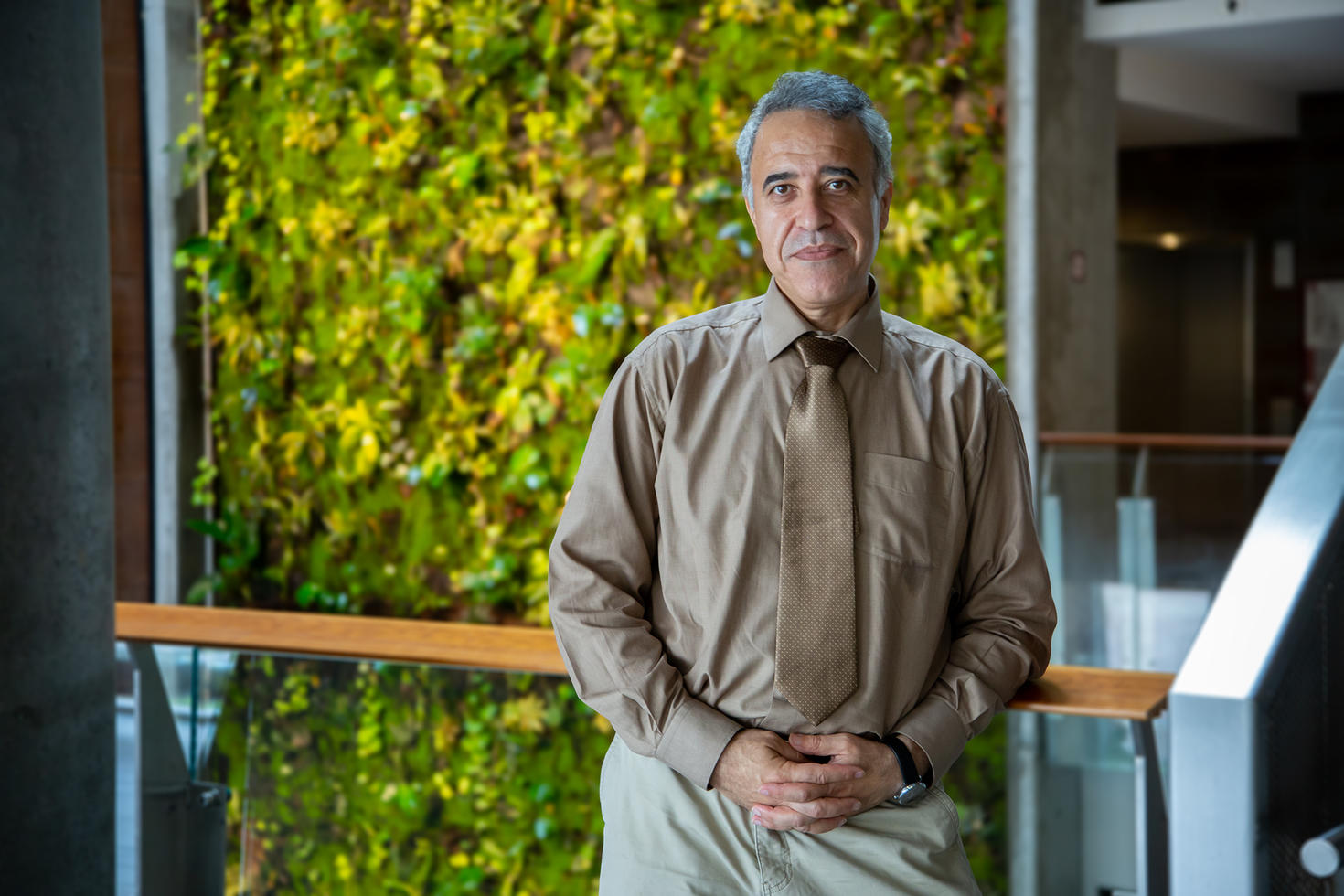If someone handed you the answers to climate change in a locked safe without including the combination, which AI expert would you call to crack it open?
Dr. Hossein Bonakdari, uOttawa associate civil engineering professor, would be a good place to start.
Before AI, processing big sets of environmental data simply wasn’t possible — there was far more data than the existing tools could analyze.
That’s why Bonakdari is collaborating with researchers around the world to unlock insights that — until now — have been buried in big data sets.
What does AI contribute to climate change research?
The potential benefit AI offers for understanding climate change on a deep level, and developing solutions based on those insights, is enormous.
Bonakdari’s primary research creates those benefits by developing water management strategies for reducing and mitigating hazards in urban and agricultural sectors, in addition to using AI tools for wildfire management.
But he cautions us to remember that AI needs a good driver to do its job. In this case, it takes a team of experts collaborating together.
“Our team, well-versed in their respective fields, take on the role of educators, imparting their knowledge to the AI models,” said Bonakdari. “We guide these models, teaching them what to seek within the data.”
The power of AI gives them the ability to drill down into previously unmined layers of high quality, high-resolution data from meteorological agencies, government databases, weather stations, remote sensors, and satellite imagery.
Some of the data points used to predict flooding include precipitation levels, river and stream flow rates, soil moisture content, weather forecasts and topographical data.
For wildfires they gather temperature and humidity levels, wind speed and direction, fuel moisture, historical fire occurrences and types of vegetation.
Bonakdari says the AI tools take data analysis to a new level by delving into the intricacies of the data sets in addition to identifying trends and patterns. This gives scientists a quick way to accurately make sense of vast volumes of information.
“Our AI tool acts as a critical ally, capable of efficiently processing and extracting meaningful insights from this vast and ever-expanding pool of information,” said Bonakdari. “It navigates this ocean of data to detect intricate patterns, providing an invaluable resource for understanding and addressing environmental challenges.”
What are the specific questions they’re trying to answer?
Understanding how climate change is affecting Canada is complex.
Because of Canada’s vast geography, researchers have to track extreme conditions and potential impacts that vary widely across the country.
For example, we have an abundance of freshwater resources, but the Okanagan Valley still experiences drought and a high risk of wildfires — this year an unprecedented 18,000 hectares of forest was lost, which Bonakdari says was a six-times increase to previous years.
Or you may think warmer temperatures and a longer growing season would enable farmers to grow more food, but topsoil erosion is actually decreasing agricultural production and could emerge as the paramount challenge facing Canadian farmers in the coming years.
That’s why Bonakdari is quick to remind us that while the warmer temperatures brought on by climate change is a factor, what they actually track are extreme weather conditions. For example, tracking big winter storms is just as important as tracking high summer temperatures for predicting floods.
They do this by applying one of these four analytics models to the question at hand:
- descriptive analytics tells them what happened
- diagnostic analytics explains why
- predictive analytics tells them what will happen, and
- prescriptive analytics provide the solution.
Why is AI a game-changer for climate change research?
The good news is AI can exponentially improve our ability to prevent, predict, respond and recover from natural disasters.
And thanks to partnerships with not only private sector partners in Canada, but global players such as the University of Hawaii, Bonakdari and his team are able to put more of this research to the test.
While weather and climate change are at their core unpredictable, with tools such as AI we can get better at understanding and respecting mother nature in hopes of reducing these instances of disaster, said Bonakdari.
“Every second counts when you’re fighting fires, floods and other types of extreme weather,” he said. “We need to have a quick and effective response to mitigate or reduce impact, and technology can help us do that.”
This article was first published in the Ottawa Business Journal.
